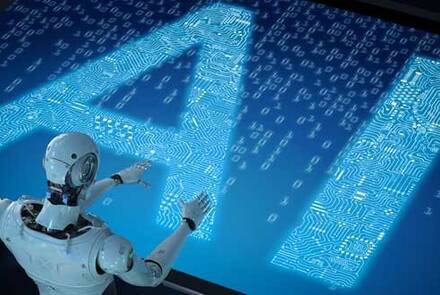Ensuring Security During AI Development
In today’s rapidly advancing digital landscape, artificial intelligence (AI) is transforming industries, enhancing efficiencies, and driving innovation. However, with great power comes great responsibility, and ensuring secure AI development is paramount. The integration of AI into critical applications, from healthcare to finance, makes it a prime target for cyberattacks. To combat these risks, security and data science teams must collaborate closely throughout the AI development lifecycle to ensure robust, secure systems. Here’s how they can work together effectively.
- Joint Risk Assessment
Before an AI project begins, both security and data science teams should conduct a joint risk assessment. While the data science team focuses on the quality, bias, and integrity of the data, the security team should identify potential vulnerabilities that might arise from the use of certain datasets, tools, or algorithms. Security professionals can help data scientists understand how malicious actors might exploit AI models, such as by feeding adversarial inputs or manipulating training data.
A comprehensive risk assessment that merges these perspectives ensures that potential threats are identified early, setting the stage for a secure development process. - Secure Data Handling and Governance
AI models are only as good as the data they are trained on. But data, especially sensitive data, can be a security and privacy minefield. Data science teams handle vast amounts of personal, proprietary, or even classified information, making it essential for security teams to establish robust data governance policies. This includes:- Data encryption: Ensuring that data is encrypted at rest and in transit.
- Access controls: Limiting who can access sensitive datasets and monitoring access for unusual activity.
- Compliance: Ensuring that data usage complies with relevant laws and regulations, such as GDPR or HIPAA.
Collaboration between security and data science teams is essential to prevent data leaks, unauthorized access, and regulatory violations.
- Embedding Security into Model Design
Security can no longer be an afterthought in the development process, especially in AI systems where vulnerabilities can lead to costly breaches. Security teams should be embedded early in the model design phase, ensuring that AI developers adopt secure coding practices and build resilience against potential threats.
This collaboration allows for:- Secure model training: Protecting the training pipeline from tampering, such as data poisoning attacks, where adversaries introduce malicious data to manipulate the model’s outputs.
- Robust algorithms: Implementing algorithms that are resistant to adversarial attacks, where subtle manipulations to input data can cause AI models to produce incorrect outputs.
- Regular threat modeling: As AI models evolve, security teams should continually assess how new features or changes could introduce new risks.
- Ongoing Monitoring and Incident Response
After an AI system is deployed, the collaboration between security and data science teams should not stop. Continuous monitoring is essential to detect any anomalies that could signal an attack or system failure. Security teams can develop and implement intrusion detection systems, while data scientists monitor model drift or performance issues that might indicate tampered inputs.
Moreover, both teams should collaborate on incident response plans tailored to AI-specific threats. If an AI system is compromised, having a coordinated approach ensures a swift, effective response that minimizes damage and restores the system quickly. - Building a Culture of Shared Responsibility
For collaboration between security and data science teams to be effective, there needs to be a cultural shift within organizations. Often, these teams operate in silos, with little understanding of each other’s roles and challenges. Leaders must foster a culture of shared responsibility, where security is viewed as an integral part of the AI development process, not a bottleneck.- Cross-training: Encourage data scientists to learn the basics of cybersecurity and security professionals to understand the fundamentals of AI and machine learning.
- Regular communication: Hold regular meetings between the two teams to discuss potential threats, best practices, and new developments in both fields.
- Shared tools and resources: Create platforms where both teams can collaborate on threat modeling, secure coding, and risk assessment throughout the AI development lifecycle.
- Ethical Considerations in AI Security
The collaboration between security and data science teams should also extend to ethical considerations. With the rise of AI comes increased scrutiny over issues such as bias, discrimination, and surveillance. Security teams can help ensure that AI systems do not just adhere to technical security requirements but also maintain ethical integrity. Data scientists, in turn, should ensure that models do not reinforce biases or discriminatory practices and that security measures don’t infringe on privacy rights.
Conclusion
The development of AI systems presents unique security challenges that require the expertise of both data scientists and security professionals. By fostering a close collaboration between these teams, organizations can create AI solutions that are not only powerful and innovative but also secure and resilient against emerging threats. Ultimately, secure AI development is a team effort that hinges on communication, shared responsibility, and a forward-thinking approach to both technology and security.
By bridging the gap between security and data science, organizations can protect their AI systems, data, and users, ensuring that AI serves its purpose without compromising security.
For more information about Trigyn’s Artificial Intelligence (AI) Services, Contact Us.






